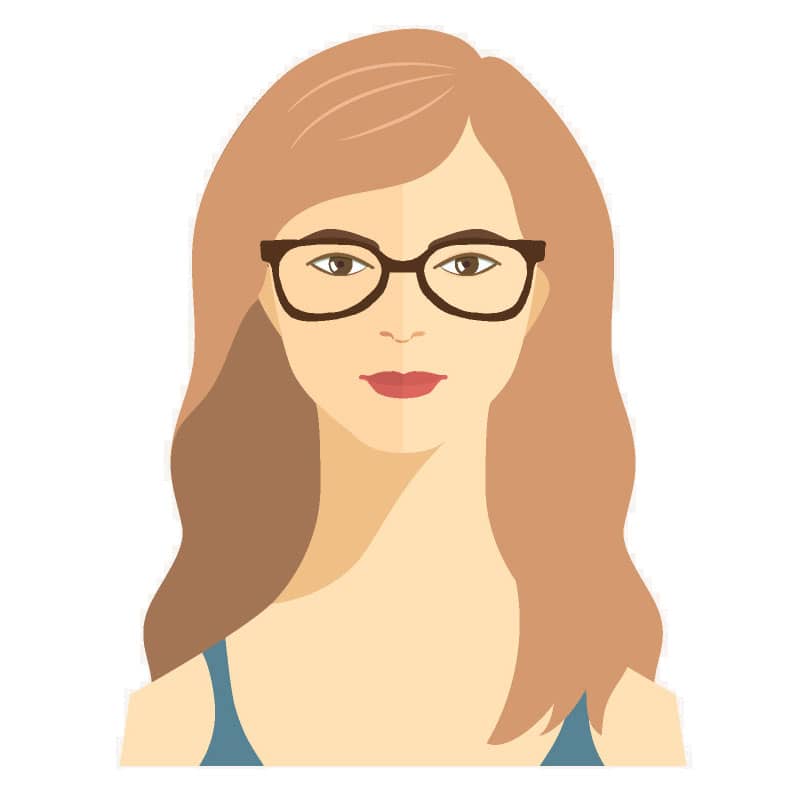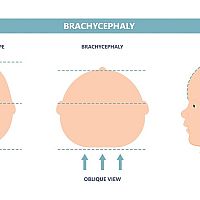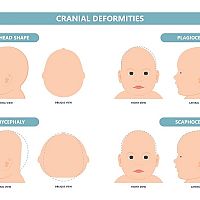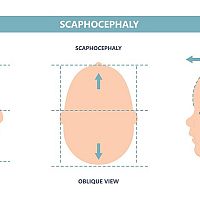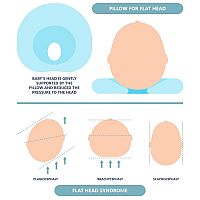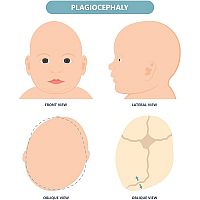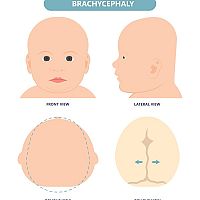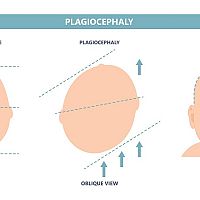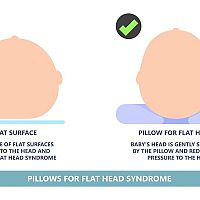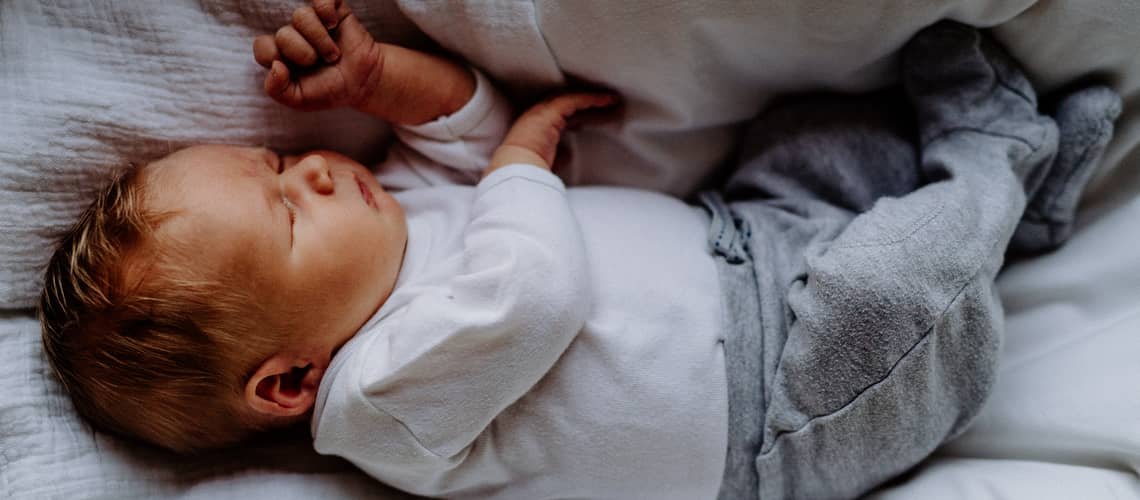
Flat head syndrome. What does a flat head look like?
Careful handling of a newborn is the first and basic skill that must be acquired not only by parents, but also by friends and acquaintances who wish to have some contact with the baby. The reason is mainly the fragility and flexibility of the child's bones, which become stronger with gradual development. A pliable structure is characteristic especially for the skull of a newborn. This part of the child's skeleton protects the most important human organ - the brain. Sometimes, however, due to the influence of various external factors, there is an overload of certain parts of the skull, and thus the problem of the baby's flat head arises.
What do the different types of baby's flat head look like? What causes them? What steps can be implemented to prevent the baby's flat head? You can read the answers to these questions, as well as how to proceed in the event that such a deformation of the newborn's skull has already occurred, in the following article.
Development and growth of the skull of the newborn
In the early stages of a newborn's life, the skull is characterized by pliability and softness, which is largely related to its continuous development. Within the human skeleton, the individual skull bones are connected by the so-called cranial sutures.
Up to a certain age, there are empty spaces between these ligaments, and therefore also between the individual bones of the skull. These provide enough space for the bones of the skull to continuously grow and develop, which ultimately leads to the growth of the skull as a complex whole. However, they also provide space for the growth of the human brain.
During the first six months of a child's life, the skull doubles its original size, and within two years its size triples. The growth rate decreases after the seventh year of the child, while between the 16th and 18th years of life the skull growth process is finalized.
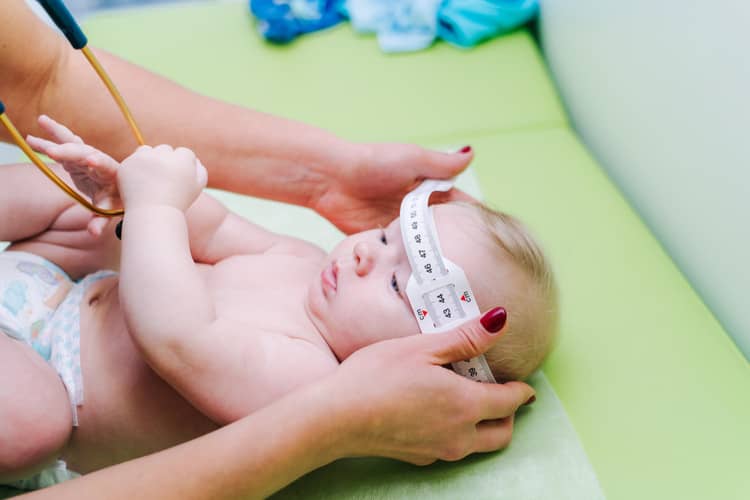
Craniostenosis or flat head?
Sutures are characterized by their elasticity, which gradually turns into a harder bone structure connecting specific skull bones. If this fusion of the bones of the skull occurs prematurely, there is a negative impact on the development of the child by stopping the growth of the skull in the given part.
This is caused by the fact that the baby's skull is not sufficiently developed, which leads to the elimination of the space intended for brain growth. Such a phenomenon is called craniostenosis in professional terminology. It is a specific deformation of the baby's head. The doctor can recognize it at a glance, while he can subsequently also determine the specific cranial suture, the premature fusion of which occurred in the child.
If the fusion of the cranial sutures takes place in the correct way, but nevertheless there is a certain tangible, often visible deformation of the newborn's skull, we are talking about a baby's flat head. This phenomenon occurs as a result of external and influenceable factors, such as incorrect positioning of the child during sleep or wakefulness or a hard mattress.
Flat head - causes
From an internal point of view, flat head can also cause a lack of vitamin D, which contributes to bone strength. The absence of this vitamin has the opposite effect, increasing the likelihood of bedsores in the head area.
The dosage of vitamin D needs to be adapted to the baby's growth rate. Premature babies grow and gain weight faster than full-term babies, which means that they need more vitamin D for proper bone growth. A pediatrician will help with setting the optimal dose.
It can occur during pregnancy, when greater pressure was exerted on the fetal head, which is mostly caused by a lower amount of amniotic fluid surrounding the baby. Flat head can also occur due to birth complications, which lead to the use of gynecological forceps.
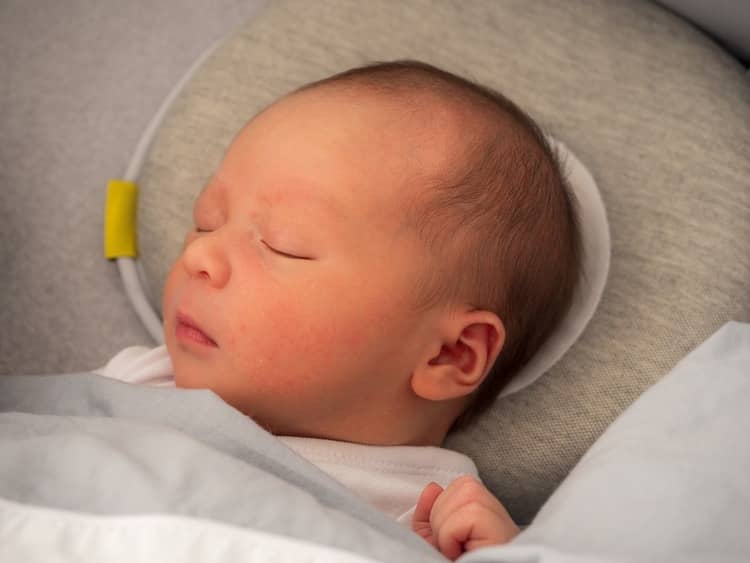
Craniostenosis vs flat head
While craniostenosis is considered in many ways to be a deformation of the skull with possible serious consequences in the form of damage to the cerebral cortex or blindness, a flat head is more known to people as an aesthetic defect that may (but may not) improve over time even without significant medical intervention.
The difference between these two types of cranial deformation of a child can also be observed from the aspect of the period when it develops. While craniostenosis often manifests itself after birth, or within one month of giving birth, flat head often occurs over time by overloading a particular side of the head.
Both deformities of the newborn's skull need to be consulted and dealt with by a specialist who is best able to assess which method of treatment is most suitable for the baby. In any case, it is true that these deformations of the child's head follow each other, in the sense of the need to rule out one diagnosis in order to deal with the other.
Since craniostenosis is considered a more serious deformity of the child's skull, indications of this type of deformity are primarily sought from a medical point of view. If it is ruled out, it is possible to proceed to determine the type of flat head of the child based on the insufficiently developed area of the skull.
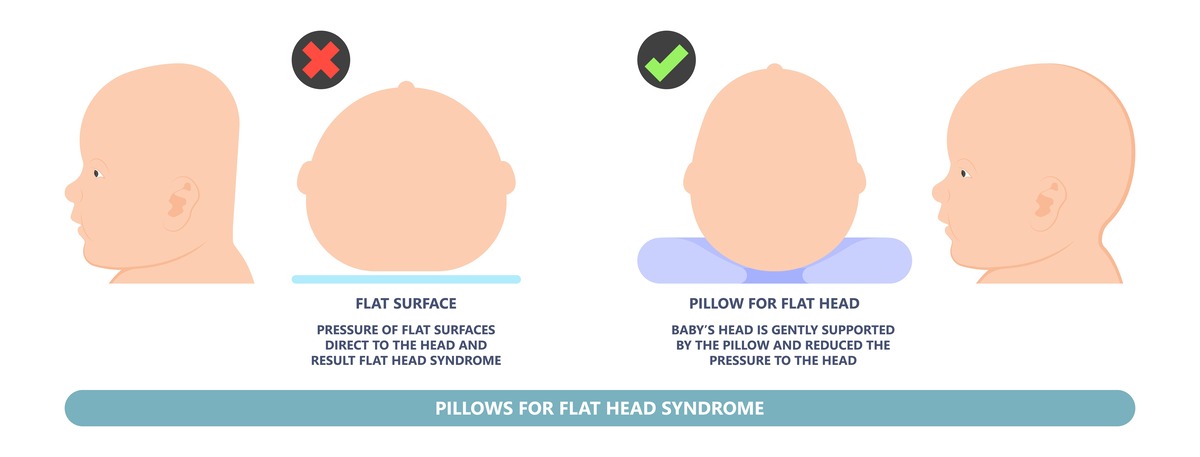
What does a flad head look like?
Since a person has several sides to choose from, among which he can choose the favorite one while sleeping or generally in the lying position, there are also several types of flat head. The difference between them is made by the preferred side, on which the child usually rests its head during the day, but most often during sleep.
It is possible to observe the differences between the individual types of the child's flat head even with the naked eye. Many times when establishing a diagnosis, or deformities of the skull approaches the measurement of the dimensions of the head. Different children may have different severity of flat head.
Brachycephaly as the second most common cranial deformity
With brachycephaly, it is possible to talk about a symmetrical deformity of the baby's skull with a shape that is more pronounced in terms of width. This is a situation when the child's head is lying in the back area, which is largely contributed to by frequent lying on the back and minimal movement of the head to the sides.
Flat head at the back, or in the area of the head, it creates a visible disproportion of the head in the middle of this part of the child's head. Brachycephaly can also be identified in babies on the basis of a more pronounced forehead, which in some cases is moved more forward.
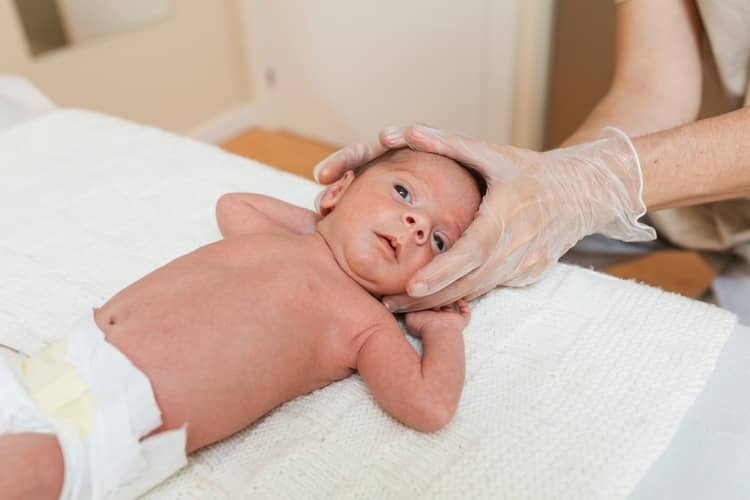
Plagiocephaly comes with a certain asymmetry
In the case of plagiocephaly, the baby's head lies asymmetrically in the area of the head. This type of deformation often causes damage to the cervical spine, which limits the baby's movement to a certain extent, which leads to excessive strain on one side of the head.
The flattening of the head is prominent only on one side, which leads to a significant difference between the side that continues to develop properly and the collapsed part of the child's head. The disproportion is also visible to the naked eye.
Distinctive signs of an asymmetrically flat baby's head are facial irregularities in the form of displaced eyes, forehead and the entire face forward. The position of the ears is also uneven, which is caused by the parallel shape of the head, which is identifiable especially from a bird's eye view (or from the perspective of a taller adult).
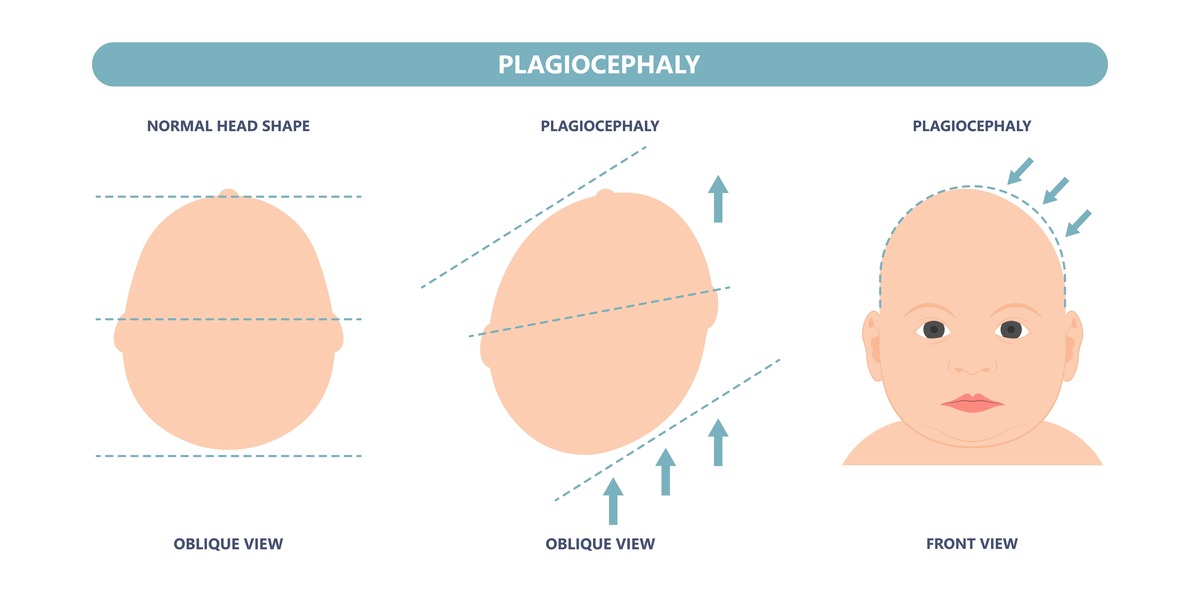
Asymmetric brachycephaly
This is the most common cranial deformity, closely followed by the aforementioned symmetrical brachycephaly. Asymmetric brachycephaly is the combination of a head compressed to the width in this way and plagiocephaly, which is characterized not only by compression of the head to the width, but also by its overall asymmetry.
The part of the baby's head whose flattening is more prominent has certain facial features pushed forward. It mainly concerns the forehead, ear and eye. Since we are talking about asymmetry, only one of the pair of organs of sight and hearing is pushed forward by this deformity.
Dolichocephaly, also known as scaphocephaly
While in the case of brachycephaly, the baby's head is flat, creating compression to the width, dolichocephaly, also known as scaphocephaly, is characterized by a narrow and long shape of the head. This type of cranial deformation occurs by loading the head from the sides, which naturally lengthens the skull backwards and forwards.
Dolichocephaly is characteristic of babies who, due to premature birth, require special care in the form of incubators, where they are usually placed exclusively on their sides. This is not a common type of deformity of the skull of a newborn.
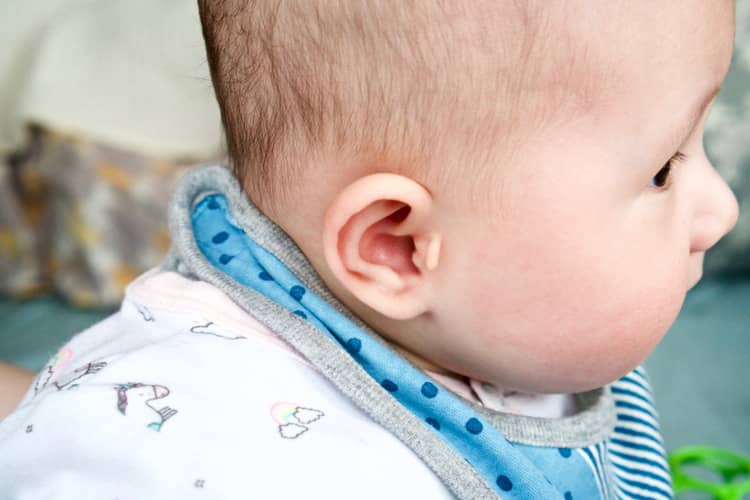
Turicecephaly or a single vertical deformation of the skull of a newborn
A specific type of skull deformation is turicecephaly, which occurs mainly as a result of vacuum extraction of the fetus during childbirth. Vacuum extraction consists in developing pulling pressure on the baby's head with the help of a gynecological bell, which literally sticks to the fetus's head.
The result of such a medical procedure is a significantly bulging baby's head and a head resembling a triangle with a slight rounding in the upper part. This is the only type of the flat head, which deforms the head in height, or vertically.
However, unlike other types of recumbent baby head, turicecephaly is caused by short-term pressure on the crown, which causes this deformity to disappear after a few days after birth and the baby acquires the correct head shape.
Positioning the baby serves as prevention
In order to avoid any potential skull deformity, parents need to learn to handle the baby as soon as possible. Caution comes first, but the positions in which the baby is carried, placed in the crib or transported from place to place are equally important.
It is important for the baby to alternate sides both in sleep and in wakefulness. It serves as a prevention against one side of the baby's flat head. Since the deformity of the head part of the skull is the most common, it is recommended to position the child slightly on its side.
The word "slightly" is essential so that the baby does not turn over on its stomach, which can have very serious consequences. Newborns are not yet able to control their muscles enough to turn their head from side to side. That is why parents have a significant role in the development and prevention of bedsores.
The correct positioning of the baby consists in regularly alternating sides to which the parent turns the child's head. Some children have a preference in the sides, so it is up to the parent to motivate the baby to position the head on the less popular side as well.
Techniques are mostly used to draw the baby's attention to a specific side through sound (singing, toys making different sounds, etc.) or a favorite toy that needs to be placed on the side to which the parent is trying to "lure" the child.
Positioning is also important when carrying a baby in your arms. A flat head can also occur during breastfeeding, sleeping or playing. When breastfeeding, as well as falling asleep on your hands, it is recommended to change sides regularly. In this way, the parent prevents not only the potential lying of the child's head, but also the overloading of his dominant upper limb.
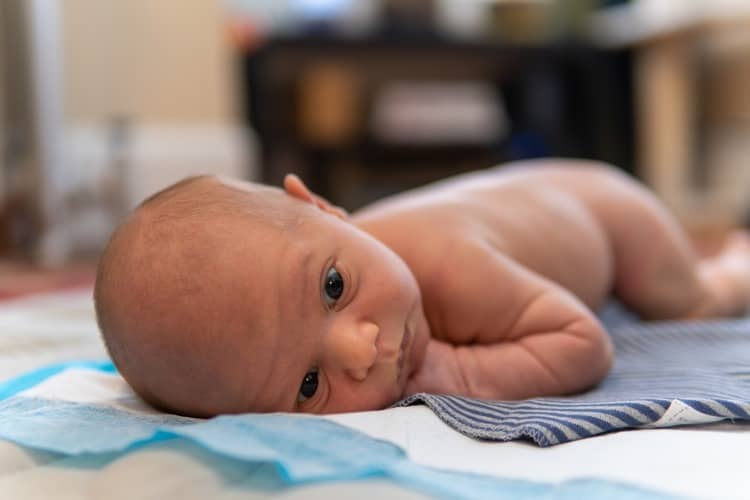
What will help with a flat head?
Sometimes, babies have a flat head despite the implementation of various preventive techniques, which is completely common and normal. After all, a parent cannot constantly monitor his child during sleep and correct his position.
Once such a skull deformity occurs, it is essential that the potential treatment and correction be discussed immediately with a specialist. In this way, the parent prevents his offspring from perceiving a bowed head in adulthood as an aesthetic defect affecting his daily life.
While in some mild cases of a baby's flat head, it will take more consistent positioning of the baby to straighten the flat head, in others it is necessary to resort to other corrective methods.
A pillow for a flat head
The pillow against a flat head has a preventive effect on the one hand, and on the other hand, its functions can also be used in the treatment of a slightly tilted head of the child. The pillow has a specific anatomy that helps to stabilize the baby's head, which makes it possible to prevent or treat bedsores on the baby's head.
Special pillows have a depression created for a comfortable and stable sleep of the baby, which prevents the head from being pushed into the solid mat by the entire weight of the child's body.
Today, such pillows for a flat head can be purchased in various colors and shapes that fit into any concept of a children's nest or crib that the parents dreamed of. A bonus is the profiled fabric that perfectly dissipates moisture and heat.
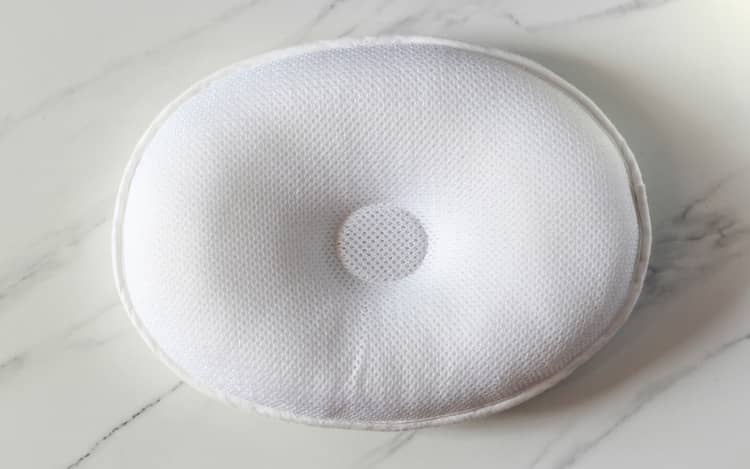
Correction of skull deformities using a helmet for a flat head
If positioning and even a pillow for a flat head did not help, or the type of baby's flat head is considered a more serious case, the expert doctor will recommend the so-called cranial orthosis. It is a special, tailor-made helmet that creates sufficient space for the regrowth of the recumbent part of the child's skull, while holding back the growth of those parts of the newborn's head that have a significant head start before the recumbency.
The headgear has the highest probability of effect between the 4th and 18th months of the child's life. The flat head helmet is made of hard material that exerts stable pressure on the baby's skull from the outside, while the inside is lined with soft fabric for the baby's comfort.
In the initial stages, it is necessary to get the baby used to the helmet, while over time it is necessary to wear the helmet on the flat head for at least 23 hours a day. Its composition from the child's head is recommended only during the time reserved for the bath, when it is necessary to thoroughly clean and dry not only the child, but also the remodeling orthosis itself.
The treatment is implemented mostly in moderate to severe cases of head recumbency, but it is an effective method. However, the effectiveness and difficulty of the treatment technique are not mutually exclusive, so from the parents' perspective it is advisable to arm yourself with enough patience and determination.
Flat head - experience
Each case of a flat head is individual and therefore requires a specific approach recommended by the doctor. Some discussing mothers confirmed that their child's bedsores disappeared after some time (mostly within one year) as a result of correct and more consistent positioning.
However, others shared their experience, which included undergoing treatment with a cranial brace. There were also those discussing who perceive the consequences of a flat head in adulthood, which they perceive as a slight aesthetic deficiency. With humor, they particularly highlighted the fact that they definitely cannot shave their heads completely, because the unevenness of their heads would be all the more dominant.
The most frequent questions - FAQ
Didn't you find the information you were looking for in our article on flat head? Do not hesitate to turn to our question and answer section, in which we have summarized several other points of interest related to the given issue. In case you have any further questions, we have created a comment section for our readers, which we continuously check and respond to all comments as soon as possible.
When do the child's cranial sutures begin to close?
Does the structure of the newborn's skull have any effect on birth?
How do you determine if a baby has a flat head or craniostenosis?
What is the process in the case of suspected craniostenosis?
Gallery
Pridať komentár
